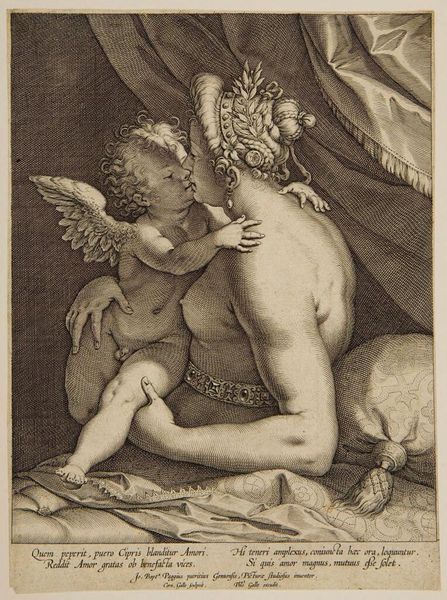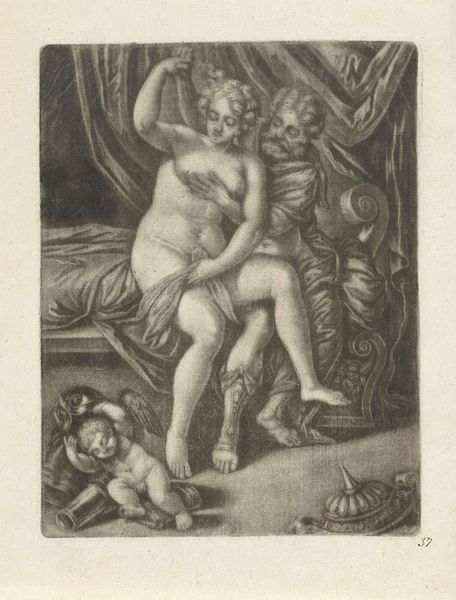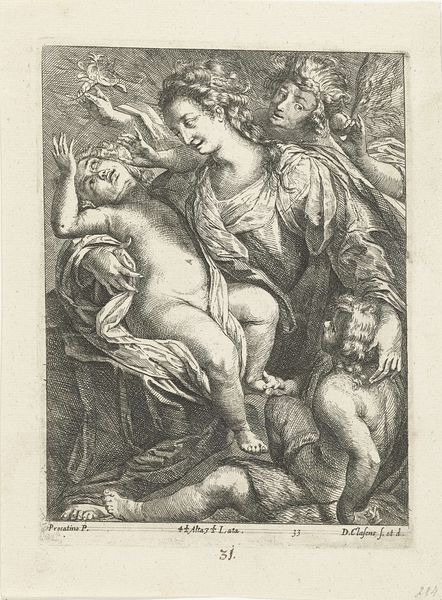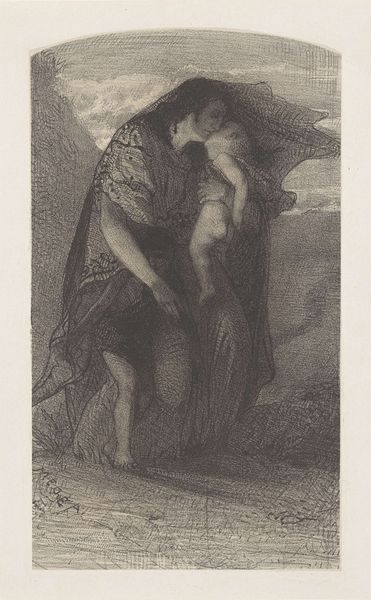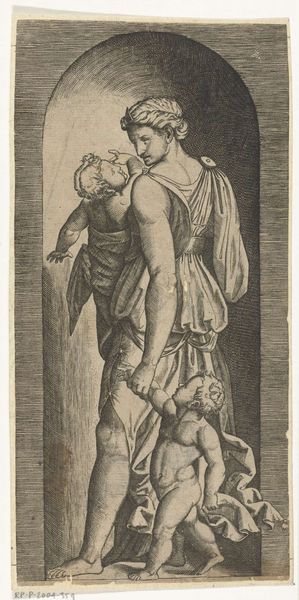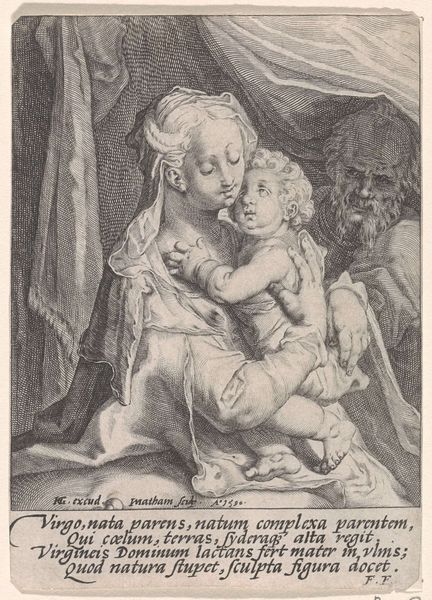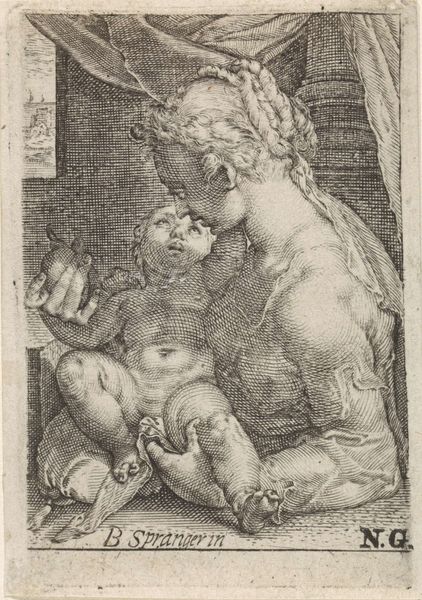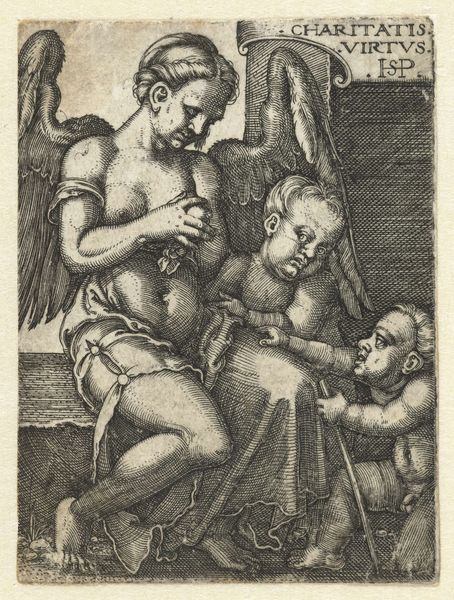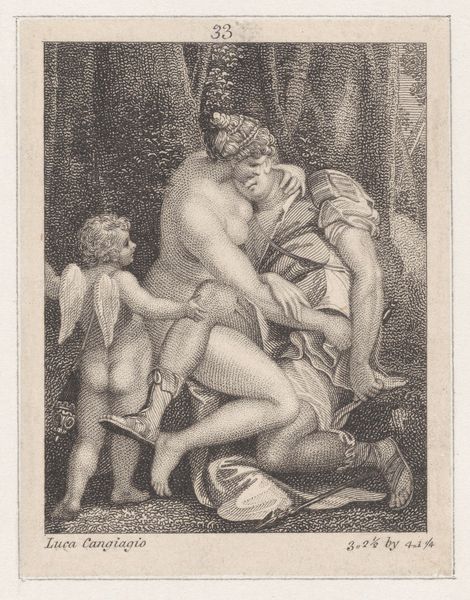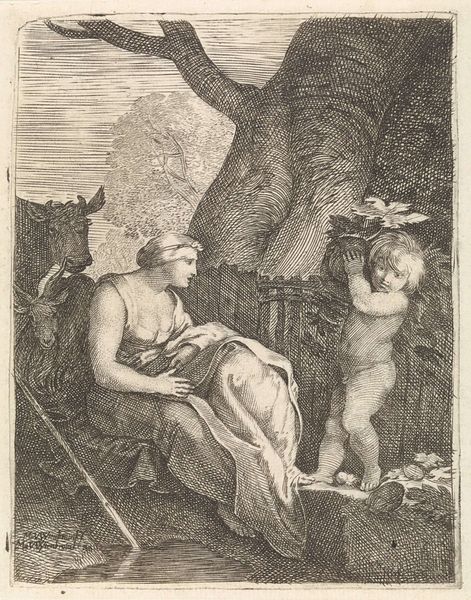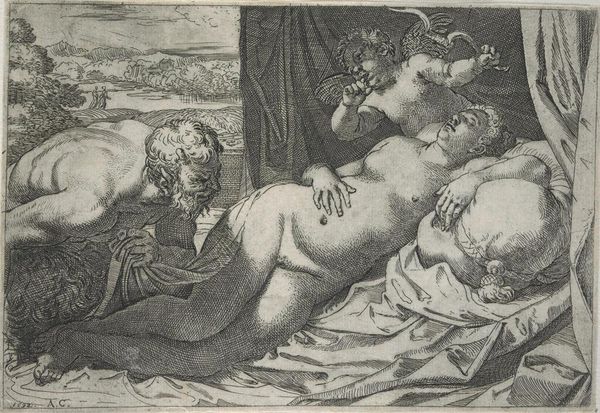
print, engraving
#
allegory
#
baroque
# print
#
figuration
#
nude
#
engraving
#
erotic-art
Dimensions: height 260 mm, width 192 mm
Copyright: Rijks Museum: Open Domain
Editor: So, this is "Venus Kust Amor" from sometime between 1586 and 1612, made by Cornelis Galle I. It's an engraving, so a print. It's quite intimate, with Venus and Cupid kissing. What do you see in this piece? Curator: Well, beyond the surface-level imagery, I see a powerful commentary on production. Think about the materials – the copper plate, the ink, the paper. These weren't just readily available; they required mining, processing, manufacturing, all within a specific economic system. Editor: I hadn’t thought about the literal making of it. So the paper's production matters? Curator: Absolutely. Paper in this period represented literacy, knowledge, and power. An engraving, mass-produced, could disseminate ideas more widely. The labor involved, from the artist to the printer, shaped the art itself, no? Consider the level of detail Galle achieved using engraving techniques. How long did that take, and what skill level was demanded to create it? Editor: So the value isn't just in the art, but in the means of producing and circulating it. Curator: Precisely. And who consumed these prints? Were they for the wealthy elite, reinforcing their status through ownership and display, or did they circulate amongst a broader public? This print invites us to question the boundaries between 'high art' and commodity. Editor: I suppose seeing it only as art, as a moment, skips all the work of making it that made that moment possible. Curator: Exactly. Examining art through a material lens connects it to a much wider web of labor and exchange. Editor: That makes me look at everything here completely differently. Curator: Good. Thinking about the artwork's material origins really deepens our understanding of it, and of the time when it was made.
Comments
No comments
Be the first to comment and join the conversation on the ultimate creative platform.
